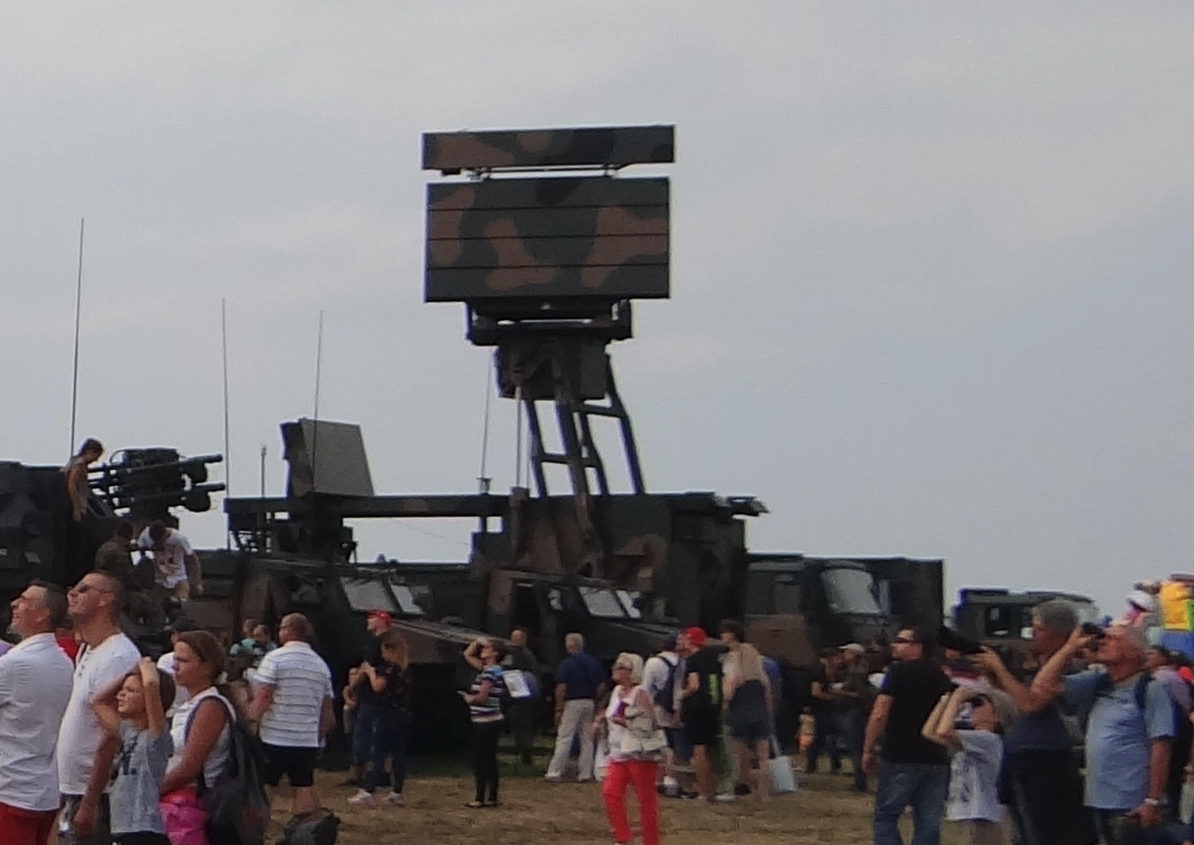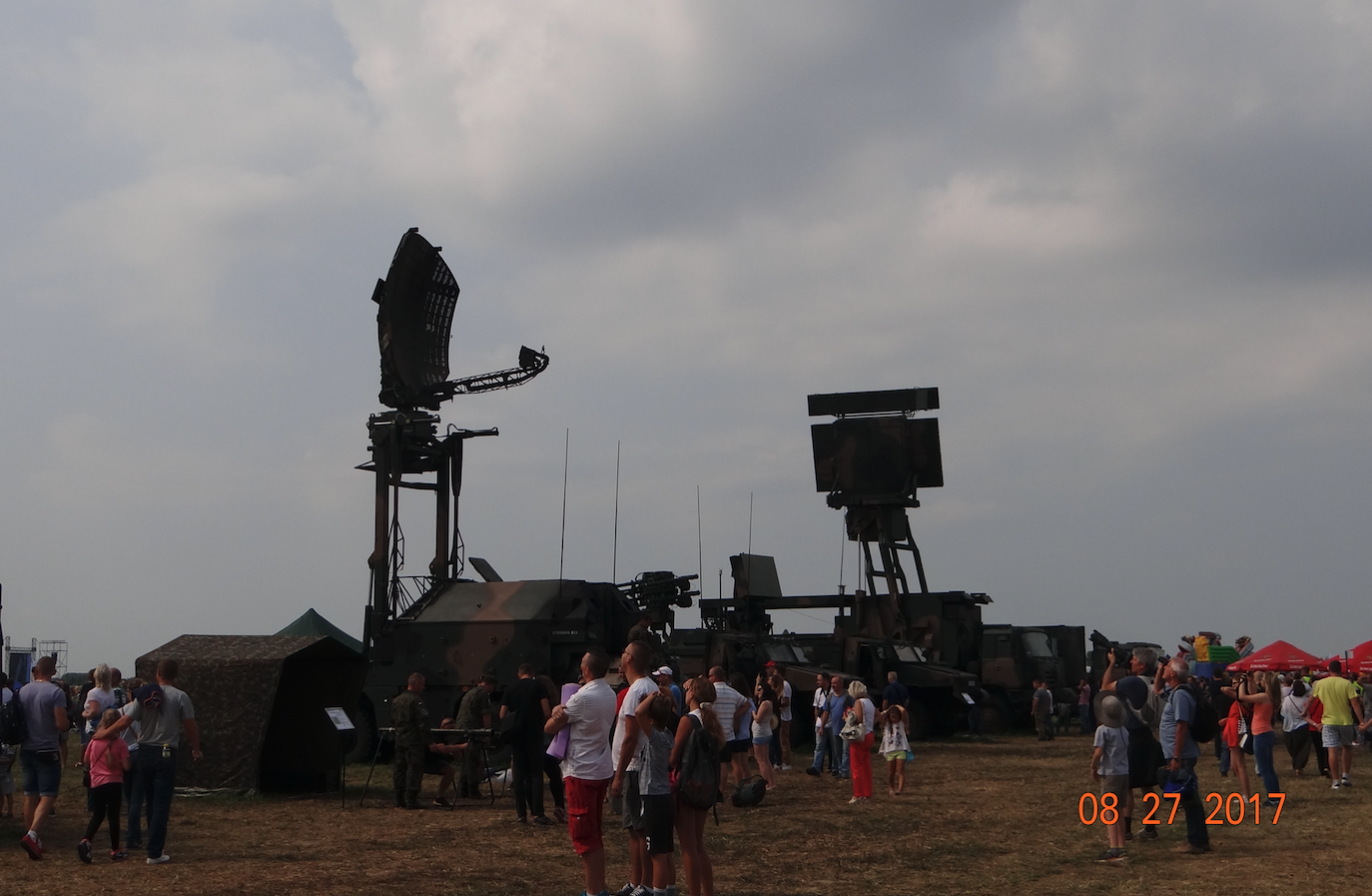Kraków 2014-11-07
Next Polish radars.
NUR-15 Odra.
NUR-15 (TRS-15 Odra) is a Polish three-coordinate, mobile, medium-range radar, mounted on the chassis of Tatra or Jelcz cars. The radar was developed by the Polish State Telecommunications Institute (PIT), which joined the structures of Bumar Elektronika S.A. The main task of the radar is to fill the gap in a possible armed conflict after an enemy attack and destruction of permanent radar stations. Therefore, their user is the armed forces. In the Polish reality, the NUR-15 (variety Odra-C) was used in the defense of the Polish coast and entered the radio-electronic warfare system of the Coastal Missile Squadron, which the Polish army bought for the navy.
The beginnings of the development of the NUR-15 radar date back to 1996, when the Indian Ministry of Defense started cooperation with the Polish PIT. The Indian investor needed a mobile radar that could be transported by Tatra cars, which were also used in India. Radars could also be transported by rail or Iliuszyn Ił-76 class transport plane. In Poland, this task was completed and the complete radar was delivered in 2001. The radar in India was designated CAR-1100. On its basis other varieties have been developed; for missile sets, for the navy, for the land forces.
While working on the radar for India, PIT also started working on the radar for the Polish Armed Forces. In 1999, the Department of Development and Implementation of the Polish Ministry of National Defense decided to subsidize the project of a three-coordinated medium-range radar with the company designation TRS-15, which was to replace the radar sets: the N-31 rangefinder and the N-41 altimeter in the future.
The TRS-15 prototype was created in the period 2001-2003 as a radar consisting of two basic elements: the antenna system, i.e. the JBR-15 Unmanned Radar Unit, and the information processing and imaging system, i.e. the RSW-15 Mobile Display Station. To ensure the required service life and operational reliability, a transmitter built on the basis of a traveling wave tube (LFB), with linear frequency modulation, with transistor amplifiers was used. Although the newest radar systems of this type in the world are built in fully semiconductor technology, the use of the LFB in the Odra River was dictated by; mastering this technology by PIT, reducing the complexity of the structure, including reducing the weight of the antenna (the main elements of the transmitter have been moved to the JBR cabin), lowering its operating temperature and thermal signature, as well as simplifying the cooling system. Above the main antenna there is a flat IFF antenna of APF-185 type. The entire antenna system with motors is placed on a hydraulically lifted frame, developed by OBRUM Gliwice, which allows it to be raised to a height of 8 meters.
Factory tests of the radar prototype were carried out in the period 2003-2004. The first four NUR-15 stations were installed in the 3rd Wrocław Radio Engineering Brigade in the period 2007-2010.
At that time, work was already underway to modernize the radar. First of all, the IFF antenna was changed - a new ZAI-15 system was used, adapted to work also in civil ICAO systems. The KZS-15 remote control console was also built in a container and can be installed at any command post. One KZS-15 can control up to 16 Odra radars.
At the beginning of 2013, press information appeared that on January 25, 2013, the Ministry of National Defense signed a contract for the purchase of another 8 NUR-15 M (TRS-15) radars from the Bumar concern. The contract was worth PLN 330 million. The deliveries are scheduled for 2015-2017.
Basic data of the NUR-15 radar; 240 km range, refreshing every 10 or 5 seconds. Working range S. Impulse power 185-220 kW. The ceiling is 30,000 m. It has two operator stations. It can track more than 250 routes of objects simultaneously. The radar is powered by a three-phase voltage source 3 × 400 V, 50 Hz, the maximum power consumption is 40 kW. The antenna aperture width is 4.10 m and the height is 2.10 m. Uncoil time 20 minutes. The complete set consists of the Maintenance-Free JBR-15 Radar Unit, the RSW-15 Mobile Display Station, located on the chassis of off-road trucks and two towed power generators ZPO 65 TDEZ with a capacity of 65kVA each. Both Odra modules were mounted on Tatra cars - JBR-15 on a four-axle T 815-27R84 34 300 8x8, and RSW-15 on a three-axle T 815-26WR25 26 255 6x6. Both are powered by Tatra engines - the first T3C-928.90 with 300 kW (407 HP), the second T3B-928.60 with 255 kW (346 HP). Gross weight is JBR 28,200 kg. Gross weight of RSW 20,800 kg.


Written by Karol Placha Hetman
